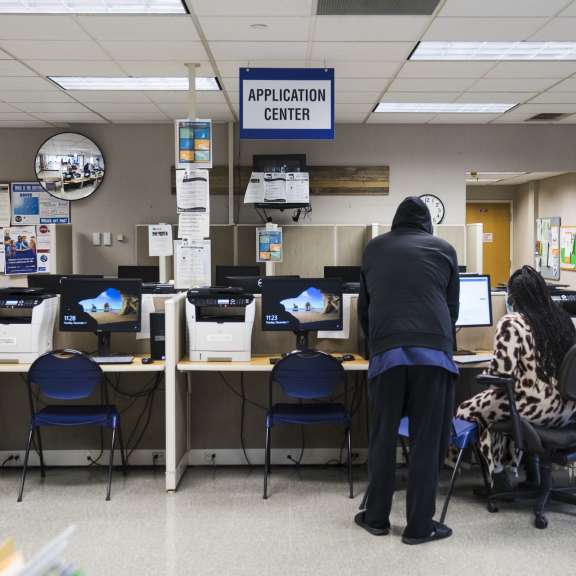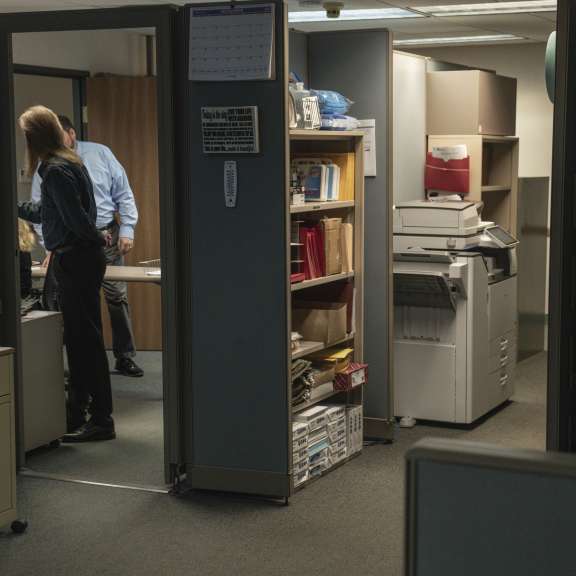Rebuilding trust through human-centered design
How UIA and Civilla are revitalizing unemployment delivery in Michigan

The pace of progress in public institutions can often be determined by the level of trust it maintains. It only takes a moment to lose it, but it can take years to rebuild.
This is the challenge Michigan’s Unemployment Insurance Agency (UIA) has been working to overcome since the outset of the pandemic. COVID-19 brought unprecedented times to Michigan residents, and with it, an unprecedented number of claims to the agency.
As many Michiganders sought support, claims spiked from 5,000 a week to more than 388,000. The UIA struggled to handle more than 5.8 million claims from March 2020 to June 2022, amidst high leadership turnover, outdated technology, and a significant uptick in fraudulent claims. Like many institutions, this left UIA overburdened and under-resourced to provide the support that Michigan residents needed.
In recent years, under the leadership of Director Julia Dale, Civilla and UIA have been partnering to improve the unemployment insurance experience. Building trust has been a core part of our work with UIA and has produced resources that ease the experience for both their staff and customers.
it starts with listening
Human-centered design is a process that centers itself around listening. Listening helps people feel seen and understood. And it can be a powerful tool in helping leaders and institutions build trust because of it.
“The thing about building trust is that there are no shortcuts,” explains Michael Brennan, CEO and co-founder at Civilla. “In our work with UIA, we all had hunches about what could be improved, but we needed to understand the lived experiences of residents, frontline workers, and leaders, and connect those dots to get the foundation right.”
Working alongside UIA staff, we conducted discovery research to uncover areas of focus that would help rebuild trust. We spent time with residents who had navigated the unemployment system to understand their journey and pain points. We sat with business employers who were interacting with UIA to understand what was working and what wasn’t. We also met with frontline workers to understand the processes in place that were causing friction. Out of that research, we lifted up places to begin our work. One of the places was a project we call the claimant roadmap.
centering the user experience
During our research, we doubled down on talking to residents with UI claims and UIA staff. Our team learned the challenges that claimants experienced when trying to file for and receive unemployment benefits. Pain points included a confusing website and overwhelming jargon, multiple web pages of information, and limited ways to track processes and access their status.

“Since we were designing a solution for [residents], we wanted to learn through them. How did they need the information? What was their approach when they were looking for answers to their questions?”
Eesha Patne, Researcher/Designer at Civilla
In navigating the application process, we learned it was helpful for residents to receive information in a linear format—like a roadmap. This research resulted in the UIA Claimant Roadmap, a six-step resource guide that uses simple language to explain how to apply for and understand unemployment benefits.

Since its launch in August 2023, the UIA Claimant Roadmap has become the most-popular resource on the UIA’s website, with more than 600,000 views to date.
"The roadmap was designed with our customers in mind...it consolidates all the information people need to know in one place. This resource will take some of the stress out of filing, as well as make it easier for all workers to access our program.”
Julia Dale, Director of Michigan Unemployment Insurance Agency
Being clear and open with users, and communicating in a way that best meets their needs, is a strong step toward rebuilding trust. It worked by alleviating confusion and repairing some of the information gaps that can deteriorate trust in the first place.
commitment produces lasting change
The claimant roadmap represents the physical embodiment of UIA’s efforts to rebuild trust. But there’s more invisible work going on behind the scenes too, on the part of leaders and staff.
“Despite challenges of their own, leaders and frontline staff have been very focused on the needs of residents and employers. That’s really been the catalyzing thing.”
Eesha Patne
A deep level of participation and commitment from leaders like Julia Dale has impacted the way the entire UIA team operates. UIA leaders have been deeply involved in design reviews at every stage of the work. This has helped foster a shared purpose that’s trickled down the org chart. Staff have taken learnings from research and run with them, for instance, adding clearer contact details to their website when they heard residents struggled to find them. The dedication to doing better is palpable. “They’re embodying the work, taking it outside our project meetings and spreading it within their own organizations and teams.” describes Eesha.
set clear and realistic expectations
Motivation and commitment have helped UIA move forward, but change, especially in the eyes of rightfully-skeptical residents, doesn’t happen overnight. In these moments, it’s UIA’s commitment to communicating openly that can make a difference.
“As a leader, you need to consistently match your words and actions,” explains Michael. “Over time, it’s the matching of words and actions that helps restore our faith in leaders or institutions, and improves the conditions of trust to grow.”
In UIA’s case, this has meant setting clear, honest expectations with residents and employers on the changes to come. Instead of overcommitting, Julia Dale and her team focus on concrete examples and realistic timelines. And delivering on their promises. This has led to the development of both the Claimant Roadmap and more access and transparency for business employers with the Employer Help Center, which both launched on time.
“Julia consistently matches her words with her actions. As an org that is committed to change in public service institutions, we admire that greatly.”
Michael Brennan
Restoring trust takes time and patience. But with persistent leaders, a shared purpose, and a strong commitment to the people they serve, trust in the UIA has begun to grow again.


